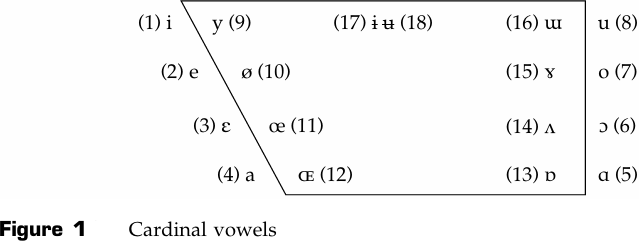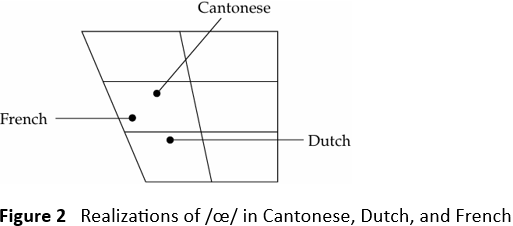


 Grammar
Grammar
 Tenses
Tenses
 Present
Present
 Past
Past
 Future
Future
 Parts Of Speech
Parts Of Speech
 Nouns
Nouns
 Verbs
Verbs
 Adverbs
Adverbs
 Adjectives
Adjectives
 Pronouns
Pronouns
 Pre Position
Pre Position
 Preposition by function
Preposition by function 
 Preposition by construction
Preposition by construction
 Conjunctions
Conjunctions
 Interjections
Interjections
 Grammar Rules
Grammar Rules
 Linguistics
Linguistics
 Semantics
Semantics
 Pragmatics
Pragmatics
 Reading Comprehension
Reading Comprehension|
Read More
Date: 2024-05-06
Date: 2024-05-03
Date: 21-2-2022
|
Cardinal Vowels
Although we use similar traditional labels for vowel descriptions of different languages (e.g. high, front, rounded, etc.), we should not assume that vowels that are described the same way are identical in two languages. For example, both French and Galician have high front unrounded vowels, /i/, but their qualities are not the same. Similarly, identically transcribed vowels from different languages may not be the same. For example, if we look at /œ/ of Cantonese, French, and Dutch, we realize that they are all different; Cantonese has the highest tongue position, French is in the middle, and Dutch has the lowest. To avoid such problems in the description of vowels of different languages, phoneticians usually refer to the set of arbitrarily chosen vowels that is known as ‘cardinal vowels’ and describe the particular vowel of a language with reference to this system. The primary and secondary cardinal vowels are given in figure 1.

The front vowels (1–4) and (9–12) and the back vowels (5–8) and (13–16) are equidistant from one another. As such, they do not necessarily represent the vowels of any language; rather, they are arbitrary reference points that the vowels of any language can be described against. The top left corner of the vowel space defines the highest and most front possible vowel, (1). The bottom right corner (5) is the other extreme, which is the lowest and most back vowel.

The other two corners represent the extremes in low front (4) and high back (8). The secondary cardinal vowels (the ones inside the grid) repeat the primary set with the opposite lip rounding. As such, (9) is high front rounded, (12) low front rounded, (13) low back rounded, and (16) high back unrounded.
We will show how, using this system, we can describe vowels from different languages. Although, as stated above /œ/ is in the inventory of Cantonese, Dutch, and French, the realizations are not identical; this can be shown as in figure 2.
Thus, we can say that /œ/ of Cantonese is a little lower than (10) and a little centralized. As for the French and Dutch counterparts, we can state the following: while French /œ/ is a little higher than (11), the Dutch sound is a little lower than (11) and more centralized.
|
|
|
|
دراسة: الفطر سلاح فعال ضد الإنفلونزا
|
|
|
|
|
|
|
حدث فلكي نادر.. عطارد ينضم للكواكب المرئية بالعين المجردة
|
|
|
|
|
|
|
وفد أكاديميّ من جامعة واسط يُشيد بجامعة الكفيل وإمكاناتها العلمية الحديثة
|
|
|